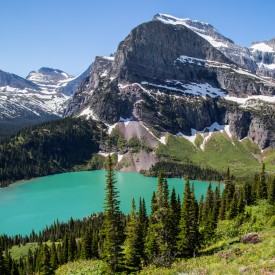The RV Industry Association unveiled priorities for the historic Bipartisan Infrastructure Law, which will help rebuild roads, bridges and airports, along with improving infrastructure behind natural resources and outdoor recreation experiences. Read the report below.
To help Bipartisan Infrastructure Law funds produce the most good for the greatest amount of people, the Outdoor Recreation Roundtable (ORR) collected recommendations from across industry segments, including the RV industry, to help the administration prioritize projects and highlight current issues these funds can help solve quickly with the highest impact.
These meaningful investments in transportation, mitigation of and adaptation to climate change’s impacts on our public lands and waters, rural development, and natural infrastructure have the potential to connect more people to the outdoors and strengthen the $689 billion outdoor recreation economy.
The report covers many segments of the outdoor recreation industry, including marine and boating, ski and snow sports, archery and hunting, fishing, concessionaires, hiking and trails, and RVs and camping.
RV & Camping Priorities
Our national parks, forests and public lands campgrounds provide iconic outdoor recreation experiences and generate billions of dollars for local economies. Repairing and maintaining them is a smart investment, and will create additional infrastructure-related jobs, as well as preserve visitor access and resources for future generations of outdoor stewards.
The $1.7 trillion infrastructure bill recognizes the importance of modernizing campgrounds, roads, bridges, wastewater facilities and EV infrastructure at a time when more Americans than ever before are discovering the health benefits that come from RV camping with friends and family. The funding would also provide the following:
$100 million to restore recreation sites, including campgrounds like Joshua Tree’s Black Rock Canyon Campground. The campground’s original design did not address the potential threat of flooding, and this poor drainage design has led to deterioration of the campground’s infrastructure and surrounding areas.
$7 billion in FLTP, NSFLTP, and other funding should supplement GAOA funding and focus on the deteriorating roads, bridges, and vital infrastructure that visitors and local communities rely on.
$7.5 billion investment to deploy publicly accessible EV charging infrastructure on and around public lands.
$65 billion to fund broadband deployment, especially in areas where RVers frequently travel.
ORR and the RV Industry Association said they support greater access to outdoor spaces for all, along with recognizing environmental concerns and adapting to future visitors and technologies. Many national park campgrounds were not designed to meet National Park Service standards for safety, accessibility or basic infrastructure. Passage of the infrastructure bill occurred at a critical time given the massive demand for camping and the recent launch of NPS’s Second Century Campground Strategy.
“Access to safe and modern campgrounds on and around public lands is essential for the great outdoors and the $114 billion RV industry,” said Craig Kirby, president of the RV Industry Association. “The unprecedented funding in BIL is critical to efforts for sustainable campground modernization and development of EV infrastructure to support the next generation of park visitors and vehicle/RV technology. As BIL is implemented, we ask that focus is placed on modernizing deteriorating infrastructure while deploying EVs to support the $689 billion outdoor recreation economy.”
View the entire list of outdoor recreation priorities here.
